Nord Stream Breaches a Stark Reminder of Undersea Infrastructure Vulnerabilities
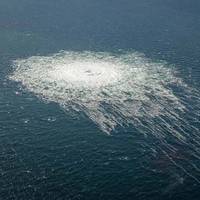
On the night of September 26, near the end of the calm season on the Baltic, a broiling kilometer-wide circle disturbed the face of the sea and a huge mass of methane erupted into the air. The gas formed a cloud that crossed Europe, in what’s considered the greatest single release of this potent greenhouse gas ever recorded.It was caused by four breaches of Russia’s Nord Stream 1 and 2 gas pipelines, located in or near the territorial seas of Denmark and Sweden. Seismologists detected explosions at a depth of 70-90 meters on the seabed.
Petrobras Orders 10th FPSO for Búzios Field
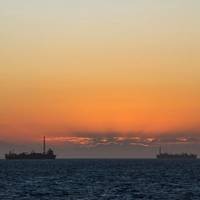
Brazilian oil and gas company Petrobras has ordered a floating, production, storage, and offloading (FPSO) vessel from Singapore's Sembcorp Marine Rigs & Floaters.The FPSO, named P-82, will be deployed at the giant Búzios oil field, in the Santos Basin pre-salt area, offshore Brazil.Worth US$3.05 billion (S$4.25 billion) the P-82 is the largest contract secured by Sembcorp Marine from PetrobrasThe P-82 will have the capacity to produce up to 225 thousand barrels of oil per day, process up to 12 million m³of gas per day, and store more than 1.6 million barrels.
ClassNK Grants AiP on LPG Reformed Gas Fueled Vessel
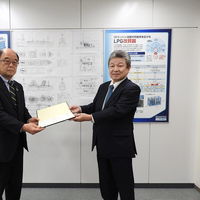
ClassNK granted an Approval in Principle (AiP) based on its Rule Part N which adopts IGC Code and its Guidelines for Ships Using Low-Flashpoint Fuels to Daihatsu Diesel for their concept design of a liquefied petroleum gas (LPG) reformed gas fueled coastal LPG carrier developed in cooperation with Iino Gas Transport, Osaka Gas, Izumi Steel Works, and Miura Shipbuilding in terms of safety assessments.The vessel is designed to be equipped with an LPG reformer developed jointly by Daihatsu Diesel and Osaka Gas, and a dual fuel engine developed by Daihatsu Diesel.
LR approves ethane transportation solution
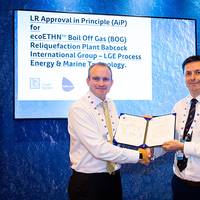
Classification society Lloyd's Register (LR) said it has awarded Babcock LGE with Approval in Principle (AiP) for a solution designed to maximize the economic transportation of ethane in very large ethane carriers (VLECs), by combining the reliquefaction and ethane fuel supply systems.Babcock’s ecoETHN solution separates excess methane from within the cargo boil-off gas (BOG) and feeds this into an ethane-fuelled VLEC engine, thereby reusing the incondensable methane gas as fuel.
ClassNK Grants AIP on LPG Reformer for Marine Engines
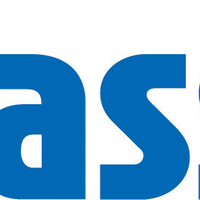
Classification Society ClassNK granted an Approval in Principle (AIP) to Osaka Gas for their joint project with Daihatsu Diesel on an LPG Reformer for marine engines. This was the first AIP granted in Japan for such equipment.The LPG Reformer is designed to convert LPG into synthetic methane gas equivalent to the kind found in LNG. Due to being mainly composed of propane and butane, LPG is susceptible to knocking (abnormal combustion), making it difficult to use as a fuel for lean burn gas engines and dual fuel engines.
Maritime's Push Toward "Net Zero Carbon"
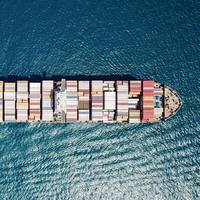
IMO’s 2050 deadline to reduce GHG emissions 50% from 2008 levels has set off a gold rush to develop Zero Emissions SolutionsClimate change is the biggest issue facing [all aspects of] the maritime industry, said Kitak Lim, IMO secretary general, in an interview earlier this year with Maritime Reporter & Engineering News. He predicted that shipping could experience as much change in the next 10 to 20 years as it has in the last 100 years, as the industry races to meet a number of challenges…
WFW Advises NYK on LNG Carrier Charter
Watson Farley Williams (WFW) advised NYK Nippon Yusen Kabushiki Kaisha (NYK) on the execution on 26 January 2018 of its long-term charter contract with EDF LNG Shipping, a subsidiary of the electricity major, Electricité de France (EDF). The contract is for the chartering of a newly built liquefied natural gas (LNG) carrier for seven years, with optional extension periods for up to thirteen additional years. WFW also worked closely with the commercial and in-house legal teams at NYK, Hyundai Samho Heavy Industries and EDF on the construction arrangements for the vessel for the project. The LNG carrier will be built by Hyundai Samho Heavy Industries in Korea and is due for delivery in 2020.
Op/Ed: Shipping's Energy Challenge
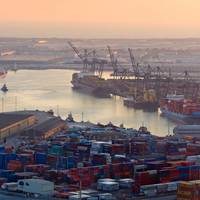
There is no more economically and environmentally efficient way of transporting the world’s goods than by sea. Compared to air or road freight, based on per ton of cargo shipped, shipping’s carbon footprint is small. Yet with the 60,000 or so ships that transport 80 percent of the world’s goods emitting about 1.12bn tons of CO2 each year, almost 4.5 percent of all global greenhouse gas emissions, it is unequivocal that we need a viable way of reducing our environment impact. As other sectors reduce their carbon footprint shipping’s is likely to increase as an overall percentage.
Green Shipping: Wessels Reederei Takes the Lead

International trade relies on transportation by sea, as about 85 percent of the freight volumes are shipped globally by vessels. But while maritime is widely regarded as the most environmentally benign of any transport system, maritime transport can cause a diverse environmental burden: It includes, beside the potential for damages and leaks, the inflow of waste water and, in particular, the emissions of air pollutants. Furthermore the improper cleaning of oil sludge, as well as the transfer of organisms into foreign ecosystems within ballast water.
Hamburg Süd Raises Goal for CO2e Reduction
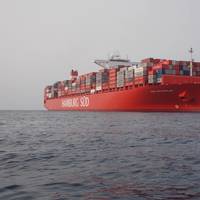
Hamburg Süd has achieved its environmental goal of reducing the CO2e emissions of its fleet by 26% by the year 2020, compared to 2009, well ahead of schedule. This is due to a number of measures. These include investments in the energy efficiency of the shipping company’s own ships, the expansion of the average ship size within the newbuilding program, the chartering of energy-efficient ships and the further optimization of vessel deployment. All in all, these activities together have led to a significantly more positive effect on CO2e emissions reduction than originally forecasted.
BP 'Grossly Negligent' in 2010 US Spill, Fines Could Be $18b
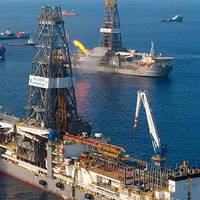
A U.S. judge has decided that BP Plc was "grossly negligent" and "reckless" in the Gulf of Mexico oil spill four years ago, a ruling that could add nearly $18 billion in fines to more than $42 billion in charges the company took for the worst offshore environmental disaster in U.S. history. BP said it would appeal Thursday's ruling by U.S. District Judge Carl Barbier in New Orleans, Louisiana, who held a trial without a jury last year to determine who was responsible for the April 20…
Congo Unveils Tender For Exploitation Of Methane Gas
Democratic Republic of Congo's oil ministry has called for bids to exploit reserves of methane gas at the bottom of Lake Kivu on its eastern border with Rwanda, the prime minister's office said on Friday. The office announced the tender on its twitter account but did not give details. An oil ministry official said the tender process had not yet begun but added that Congo needed the gas to help meet its energy deficit. "It is very important that we exploit this gas, because otherwise it has the potential to explode and cause significant damage to the population," said the ministry official, who requested anonymity. Methane and carbon dioxide collect at the bottom of the lake's icy waters.
Shipbuilding: Vigor Industrial Grows Stronger

Vigor Industrial has ballooned from a modest shipyard in Portland, Oregon, to the largest shipbuilder in the Pacific Northwest and Alaska. Vigor increasingly thinks big and builds big. The company’s new floating dry dock will be the largest in the United States. And Vigor wants to get even bigger. CEO and owner Frank Foti expresses an ambition to grow to twice the current size in the “next few years.” Foti, who is also chairman of the Shipbuilder’s Council of America, says he is, “striving for critical mass.
US Secretary of Interior Honors BOEM Ocean Research Teams

Secretary of the Interior Sally Jewell has presented the 'Partners in Conservation Awards' to two science teams conducting ocean research sponsored by the Bureau of Ocean Energy Management (BOEM) at a Department of the Interior ceremony. The research involved collaboration with about two-dozen federal, academic and private sector partners over the past four years through the bureau’s Environmental Studies Program, with both projects leveraging the National Oceanographic Partnership Program, or NOPP, framework.
LNG Bunkering: All One Needs to Know ...
In his newly published book, industry expert Nigel Draffin answers the key questions about LNG bunker fuel. The publishers, Petrospot, say that Nigel Draffin answers the key questions about LNG bunker fuel in his usual informative and lucid style. He looks at the properties of methane, gas-only and dual fuel engines, tank design, fuel and safety systems, as well as onboard and onshore storage and safety issues. Potential problem areas in the use of LNG, such as weathering, sloshing and methane slip, are sensibly and clearly analysed. Liquefied natural gas is poised to become a viable and widely used alternative to conventional marine fuels.
RINA Publishes Gas Fuel Notation
Genoa-based verification, certification and ship classification group RINA has published a new notation GAS FUELLED SHIPS which establishes requirements for the use of liquefied or compressed natural gas (LNG or CNG) on board ship as an alternative to traditional fuels. It is designed to give the industry a regulatory tool to ensure that the arrangement and installation on board of machinery using this type of fuel are such as to provide a level of integrity, from the point of view of safety and reliability, equivalent to that of a conventional installation. RINA notes that the use of natural gas as a fuel provides the advantages of a total reduction in sulphur oxide emissions…
BOEMRE Studies Methods of Locating Gas Hydrate Deposits
The Bureau of Ocean Energy Management, Regulation and Enforcement (BOEMRE) has released a report on a bureau-funded study of new and more effective methods of predicting, detecting and mapping the occurrence of gas hydrates in deepwater environments. The study, Multicomponent and Multifrequency Seismic for Assessment of Fluid-Gas Expulsion Geology and Gas Hydrate Deposits: Gulf of Mexico Hydrates, examined the various methods used to locate gas hydrate deposits. If such deposits occur in sufficiently high concentrations, they can be a potential new source of natural gas. “This study is critical to furthering our ability to assess deepwater gas hydrates as a future energy resource,” said BOEMRE Director Michael R. Bromwich.
BV Approval for Rolls-Royce
Bureau Veritas has awarded basic concept approval (approval in principal) to the Rolls-Royce MT30 gas turbine power station for LNG carrier propulsion in conjunction with electric drive. The MT30, producing 36MW, is an aero-derived gas turbine which has eighty per cent commonality with the well-known Rolls-Royce Trent 800 aero engine which has been in service for ten years powering the Boeing 777 aircraft. Compact and reliable, gas turbine power is the next step forward for the propulsion of LNG carriers. The approval in principal was issued by Bureau Veritas after a review of the technical documentation submitted by Rolls-Royce. It is the first stage of the overall assessment of the gas turbine power station, which will ultimately be formalised by full concept approval.





